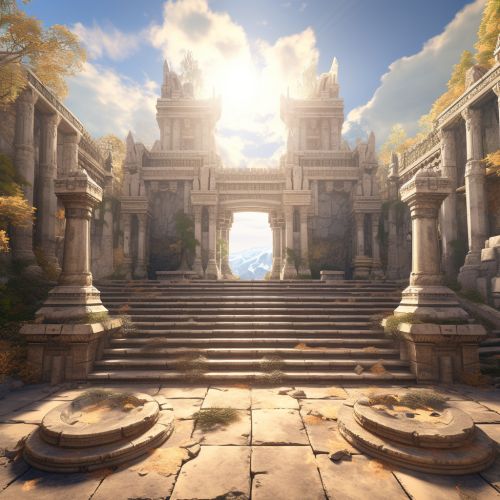Mystery religions
Origins and Development
Mystery religions, also known as mystery cults, were religious societies in the Greco-Roman world, participation in which was reserved to initiates. The term "mystery" derives from the Latin mysterium, drawing from the Greek word mystērion (μυστήριον), meaning "a secret thing."Secret Thing.
Mystery religions formed one of three types of Hellenistic religion, the others being the imperial cult, or ethnic religion particular to a nation or state, and the philosophic religions such as Neoplatonism. This is also described as a "religion of salvation," which exhibits certain characteristics such as: a distinction between the initiated and the uninitiated; rituals aiming at a change of mind through the experience of Gnosis; and a community of the initiated with a meal and other activities in common. Furthermore, "mystery religions" were known for their focus on personal religion, expressed in a unique religious experience, and their secrecy, characterized by closed membership, secret rites, and esoteric teachings.


Beliefs and Practices
The main characterization of this religion is the secrecy associated with the particulars of the initiation and the ritual practice, which may not be revealed to outsiders. The most famous mysteries of Greco-Roman antiquity were the Eleusinian Mysteries, which were of considerable antiquity and predated the Greek Dark Ages. The mystery schools were a subject of fascination for ancient writers, many of whom wrote about these secret organizations' beliefs and practices as a way of understanding and interpreting not just the rituals themselves but also the broader societal and cultural context in which they existed.
Eleusinian Mysteries
The Eleusinian Mysteries were initiations held every year for the cult of Demeter and Persephone based in Eleusis in ancient Greece. Of all the mysteries celebrated in ancient times, these were held to be the ones of greatest importance. It is acknowledged that their basis was an old agrarian cult which probably goes back to the Mycenean period (c. 1600 – 1100 BC) and it is believed that the cult of Demeter Hellenized a pre-Hellenic agrarian goddess's cult.
Mithraic Mysteries
The Mithraic Mysteries were a mystery religion centered around the god Mithras that was practiced in the Roman Empire from about the 1st to the 4th century CE. The religion was inspired by Persian worship of the god Mithra (proto-Indo-Iranian Mitra), linked to the Roman military's solar deity, merged with the military's official sun god, Sol Invictus. This syncretic religion was adapted to the military's need for a male god to represent the eternal source of life and power.
Other Mystery Cults
Apart from the Eleusinian and Mithraic mysteries, other well-documented mystery cults existed in the Greco-Roman world, such as the Dionysian Mysteries and the Orphic Mysteries. Some of the less well-documented mystery religions were the mysteries of Isis, the Cult of Cybele, and the Cult of Magna Mater.
Decline and Legacy
The decline of mystery religions in the Greco-Roman world was a gradual process. Many of the mystery religions simply faded away with the advent of Christianity, which offered a monotheistic, moralistic religion that promised eternal life to its followers. The Christian church was in direct competition with the mystery religions, even adopting some of the old religions' symbols and rituals. By the 5th century CE, the old mystery cults had all but disappeared.
